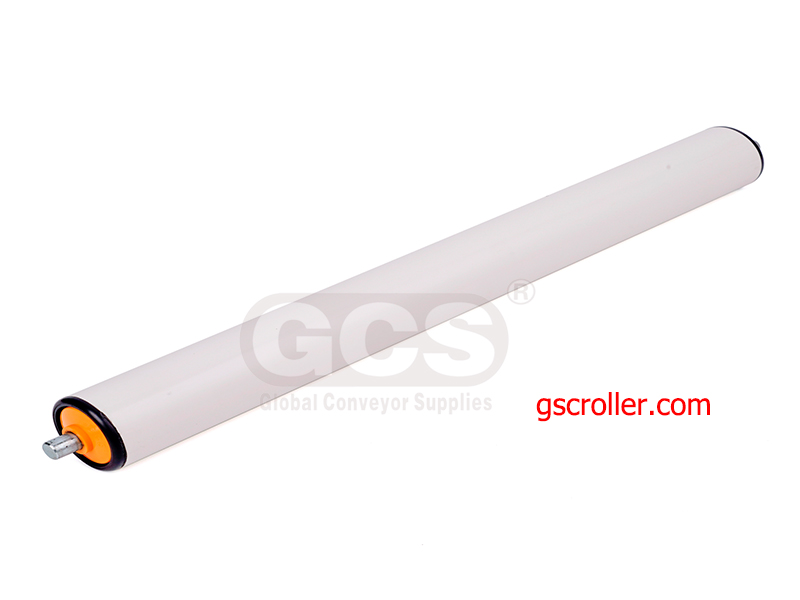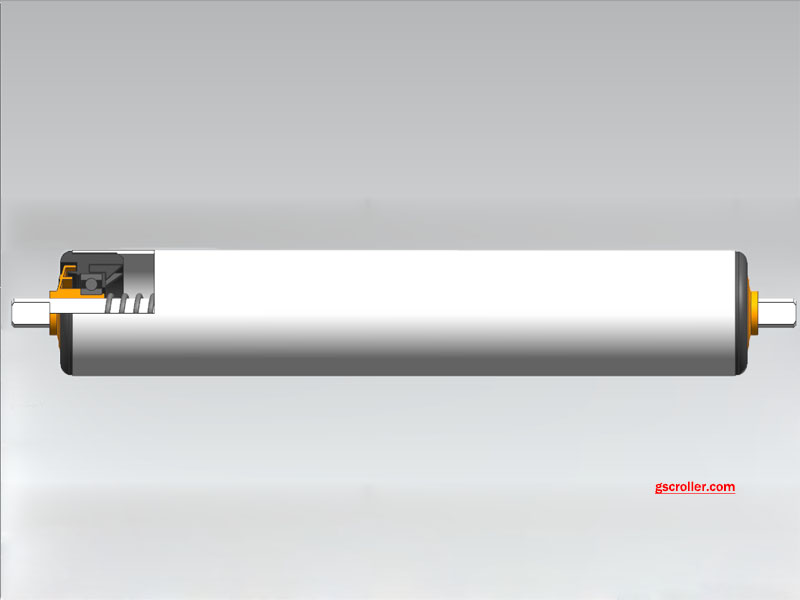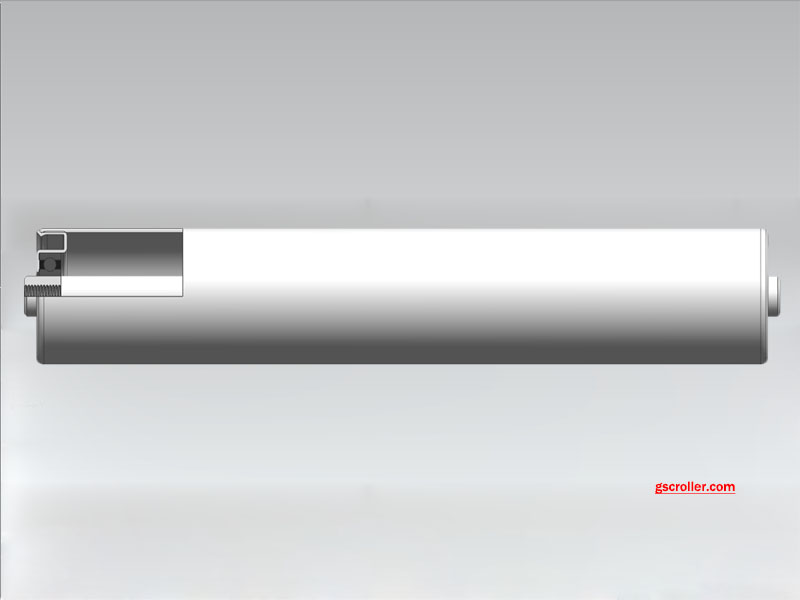Non-Powered Rollers in Gravity Conveyor Rollers are the most popular and simple method of conveying goods. The rollers are not powered. Goods are moved and conveyed by gravity or by human power. Conveyors are usually arranged horizontally or inclined.
Gravity roller is a device widely used in light material conveying systems. It uses the object's own gravity to promote the movement of the object. Typically, gravity rollers are made of metal, plastic, or composite materials and have a flat outer surface. They come in two common designs: straight rollers and curved rollers.
Specification:
Gravity roller specifications vary based on application needs and material handling requirements.
Typical specifications include drum diameter, length, and weight-carrying capacity. Common sizes in diameter are 1 inch (2.54 cm), 1.5 inch (3.81 cm), and 2 inches (5.08 cm). The length can be determined on a case-by-case basis, generally between 1 foot (30.48 cm) and 10 feet (304.8 cm). Weight-carrying capacity typically ranges from 50 lbs (22.68 kg) to 200 lbs (90.72 kg).
Craftsmanship:
The manufacturing process of gravity rollers usually involves material selection, molding, assembly, and surface treatment. Materials can be selected from high-strength metals (such as steel, and aluminum alloys) or plastics with good wear resistance (such as polyvinyl chloride, and polyethylene) to meet different application requirements.
Pipe material:
For metal rollers, common manufacturing processes include stamping, welding, and spray coating.
For plastic rollers, injection molding technology is usually used.
In addition, we can also be the steel roller cover PU
Assemble:
During the assembly process, the roller's shaft and pipes need to be firmly connected together to ensure its structural stability and load-bearing capacity.
Surface treatment:
Finally, the outer surface of the drum may require surface treatment, such as galvanizing, coating, or polishing, to improve its wear resistance and appearance.
Configuration of pipes, shafts, and bearings: In the design of gravity rollers, pipes, shafts, and bearings play an important role.
Pipes
Pipes are responsible for carrying objects and transmitting gravity forces.
Common pipe materials include steel pipes, stainless steel pipes, and plastic pipes. In order to ensure the stability of the pipe, the appropriate diameter and thickness are usually selected.
Shaft
The shaft is the core component of the roller and is usually made of strong metal to bear the weight of the object.
Bearings
Bearings are located on the shafts at both ends of the drum to reduce friction and provide support when the drum is running. Common bearing types include ball bearings and roller bearings, and the appropriate specifications and materials can be selected according to the load requirements of the roller and the use environment.
It is hoped that this introduction can more clearly explain the specifications, processes, and configuration of pipes, shafts, and bearings of the gravity roller, If you have any questions, please feel free to ask us.
What conveyor applications will these no-power rollers be used on?
No-power gravity roller conveyor table is one of the most common conveyors applied in conveying flat-bottomed items like cases, boxes, and pallets. Small, soft, or irregular items are supposed to be put on trays or other flat containers.
Product Video
Quickly find products
About Global
GLOBAL CONVEYOR SUPPLIES COMPANY LIMITED (GCS), Owns the RKM and GCS brands,specializes in manufacturing belt drive roller,chain drive rollers,non-powered rollers,turning rollers,belt conveyor, and roller conveyors.
GCS adopts advanced technology in manufacturing operations and has obtained ISO9001:2015 Quality Management System Certificate.Our company occupies a land area of 20,000 square meters, including a production area of 10,000 square meters and is a market leader in the production of conveying divices and accessories.
Have comments regarding this post or topics that you would like to see us cover in the future?
Send us an email at :gcs@gcsconveyor.com
Post time: Nov-28-2023




